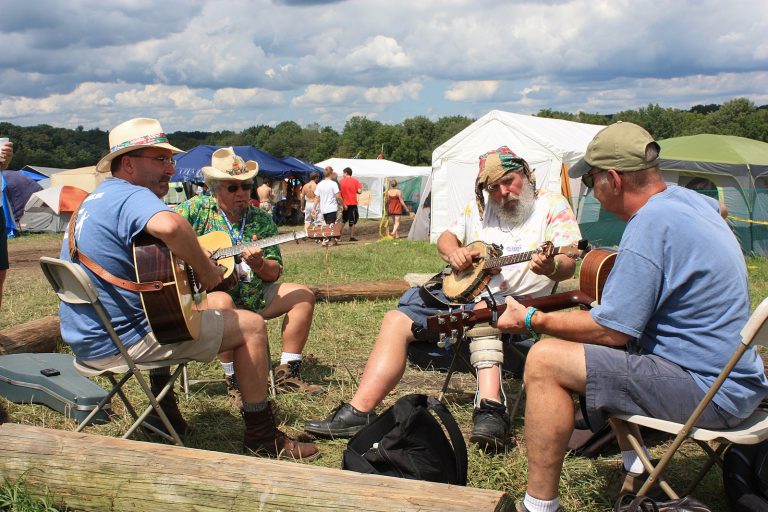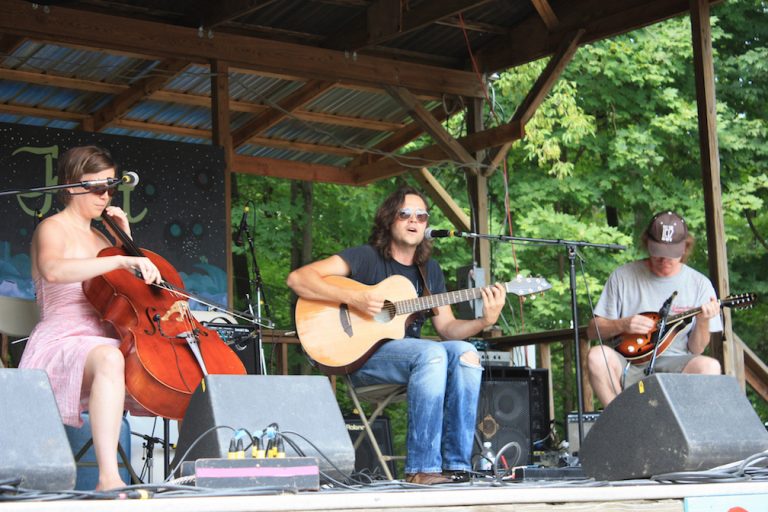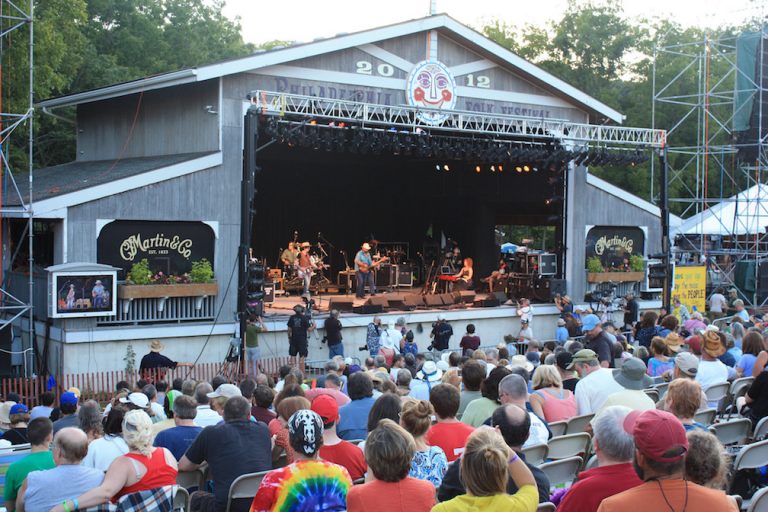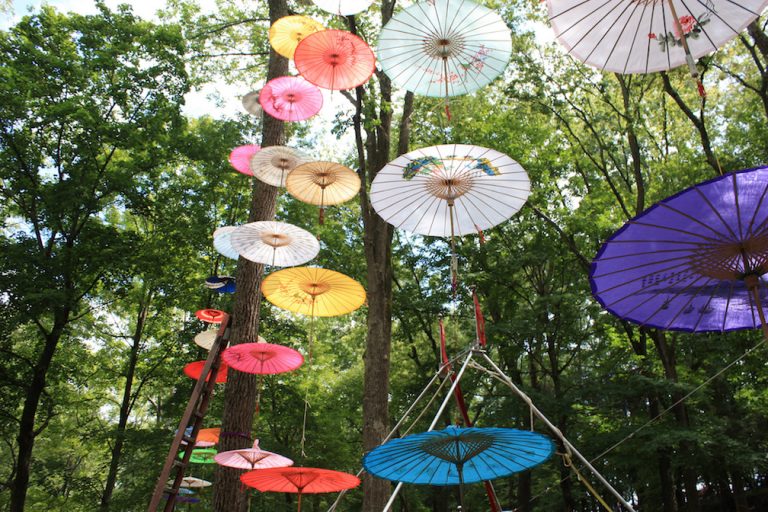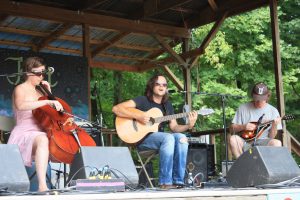Philadelphia Folk Festival
Essay
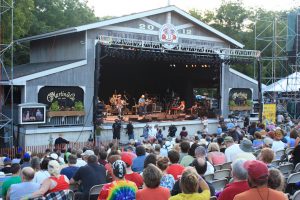
Seeking to contribute to the folk revival that reached its peak in the United States during the mid-1960s, folklorist Kenneth S. Goldstein (1927-95) and radio DJ Gene Shay (1935-2020) organized the Philadelphia Folk Festival in 1962. During a hiatus of the similar Newport Folk Festival in Rhode Island, Goldstein and Shay sought to demonstrate the dimensions of folk music and bring new musicians to the Philadelphia area. The Philadelphia Folk Festival featured popular and obscure musicians but also included lectures, workshops, displays, and other events designed to develop understanding of folk music’s legacy.
The Philadelphia Folksong Society, a nonprofit organization specializing in arts education, sponsored the festival from its inception and supported Goldstein and Shay’s vision. For the first four years, proceeds from the festival supported a folklore library, concerts at Philadelphia’s community centers, and fellowships for University of Pennsylvania students studying folklore. In the early years of the festival, folk music had a devoted Philadelphia fan base. Venues such as the 2nd Fret and the Main Point, the region’s premier folk club, included folk music in their regular lineups. Beginning as a grassroots event, the festival evolved into a four-day experience and the longest continuously-run outdoor music festival in North America. Annually the festival features performances, workshops, square dancing and hootenannies, artisan displays, crafts areas, and camping.
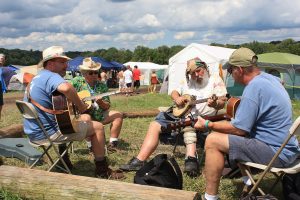
From 1962 to 1965, the Philadelphia Folk Festival took place in Paoli, Pennsylvania, at the homestead of C. Colket Wilson Jr. (1891-1978) known as Wilson Farm. The inaugural concert included performances by Pete Seeger (1919-2014) in addition to the Greenbriar Boys, blind gospel singer the Reverend Gary Davis (1896-1972), and fiddler Obray Ramsey (1913-97). An estimated 2,500 or more people attended. In subsequent years the festival grew to an audience counted at ten thousand by 1963 and fifteen thousand in 1964. Over the years, musicians have performed both contemporary and traditional genres including Appalachian, Cajun, roots revival, murder ballads, songs originally derived from the oral tradition, and the blues. The festival also has featured folk music infused with varying genres including world music, Celtic, American country, Creole-influenced zydeco, and the Ashkenazi Jewish folk music known as klezmer. Popular music artists also appeared. Festivals included blues performer Taj Mahal (b. 1942), Bonnie Raitt (b. 1949), and independent musical groups such as Iron and Wine or the Decemberists, who were influenced by folk music.
The Move to Old Poole Farm
As the festival grew, Wilson Farm could no longer accommodate the event’s needs for parking and camping grounds. Neighbors and other individuals alleged there were incidents of improper behavior, public drinking, road congestion, camping on private property, and excessive debris and trash. Despite acknowledging the cultural significance of the event, the Tredyffrin Township Zoning Board of Adjustment withdrew the festival’s permanent zoning variance in January 1965. Specifically, a performance lasting until 2 a.m. on a Sunday had violated the township’s carnival ordinance.
Although the Folksong Society challenged the Tredyffrin Township decision on the basis that a permanent variance could not be revoked, the festival also found a new and longer-lasting location. By 1965 the Philadelphia Folk Festival moved to Old Poole Farm in Schwenksville, Pennsylvania. Situated about thirty-five miles outside of Philadelphia, the working farm has converted its grounds annually to accommodate the festival and its and attendees.
The folk music revival waned by the 1970s, but the Philadelphia festival did not lose its momentum or cultural significance. Organizers maintained the event’s relevance by continuing to evolve its musical and cultural components. For example, to make folk music accessible to a younger audience, the festival has included children’s programming such as the Great Groove Band, a participatory program for school-age children highlighting fiddle and folk music. In 2010 the festival partnered with the Chicago-based Giving Tree Band to develop green initiatives and make the event more environmentally sustainable.
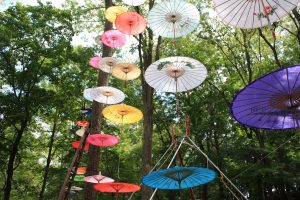
In the early decades of the twenty-first century, the Philadelphia Folk Festival attracted about thirty-five thousand event-goers annually, and 6,500 of those participants chose to camp nearby as part of their experience. The campgrounds developed into sections resembling neighborhoods with specializations such as designated quiet areas or tent or RV/vehicle camping sections. The Dulcimer Grove became the family and kids’ area. Camping became such an integral component of the festival that organizers added a “Campers Only” concert on the Thursday preceding the main event.
While generating interest in folk music, the Philadelphia Folk Festival struck a cultural balance by maintaining a strong connection to the roots stemming from Appalachian oral traditions while also incorporating new folk and cultural perspectives. The Philadelphia Folk Festival has positioned the Philadelphia area as a center for sustaining the traditions of American folk music.
Elisabeth Woronzoff earned her Ph.D. in American Culture Studies from Bowling Green State University. Her research focuses on American history and culture, gender studies, and music. She wrote her master’s thesis on the Smiths and published a chapter in the book Morrissey: Fandom, Representations and Identities. She currently develops curriculum for personalized learning projects and writes book and music reviews for the online magazine PopMatters.
Copyright 2018, Rutgers University
